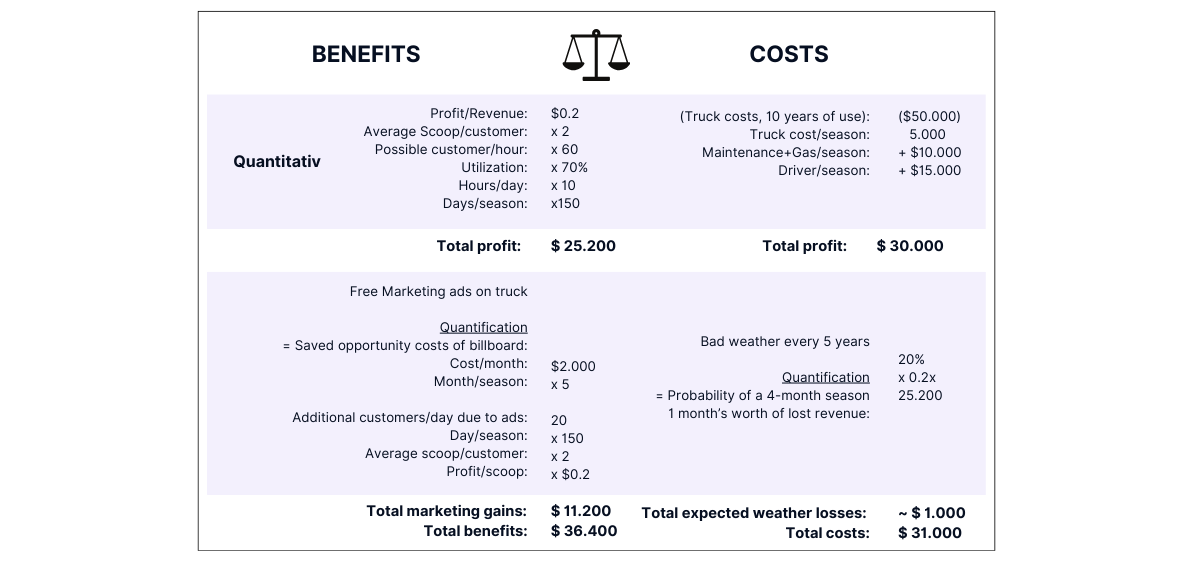The Cost-Benefit Analysis is not only a powerful decision-making tool in business, economics, and public policy, but it also plays a significant role in case interviews, especially in consulting and strategic management scenarios. The Analysis helps candidates and interviewers alike to evaluate different strategies by comparing the financial and non-financial costs against the anticipated benefits.
🔍 The article deals with the application of cost-benefit analysis for decision-making, the consideration of quantitative and qualitative factors and the evaluation of the relative attractiveness of options. We also provide a specific application example.
A Thorough Cost-Benefit Analysis Guides Every Decision
In case interviews, forming and testing hypotheses is key. With several ideas on the table, cost-benefit analysis helps you choose the best option by assessing both its feasibility and relative attractiveness through comparison and benchmarking.
Feasibility Analysis: Quantitative vs. Qualitative Factors
- Quantitative factors: These involve calculating revenues, costs, and profitability. For instance, estimating customer numbers or prices provides a clearer view of the financial consequences of a decision.
- Qualitative factors: Though harder to quantify, these aspects (like company culture) are crucial in decision-making. While profitability remains a priority, qualitative insights often influence how effectively a decision can be implemented.
Evaluating Relative Attractiveness
It’s essential to compare options by analyzing their financial returns and risks. A cost-benefit analysis enables you to select the most financially attractive option, balancing both quantitative results and qualitative considerations.
For more precision, especially with uncertain future cash flows, use the discounting method to account for the time value of money. In such cases, calculating the net present value (NPV) of future income or costs provides a solid basis for making decisions.
Why Cost-Benefit Analysis is Effective in Case Interviews
In case interviews, effectively communicating your thought process is crucial. Here are some key reasons why this method is particularly effective:
- Informed Decision-Making: Cost-Benefit Analysis helps break down complex problems into manageable parts, providing a clear, structured approach that interviewers value.
- Risk Mitigation: By evaluating both low- and high-risk options, candidates demonstrate an understanding of risk assessment, a key skill in consulting.
- Strategic Clarity: This method allows candidates to compare options clearly, enabling them to articulate trade-offs and present well-organized solutions.
- Resource Optimization: Cost-Benefit Analysis showcases a candidate's ability to maximize a client’s resources, ensuring efficient use of financial, human, or other assets.
Apply Cost-Benefit Analysis in Decision-Making Scenarios
👉 Take a look at our case library. Here you will find cases on all these topics.


